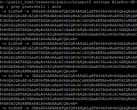It has been a few years since we published guides on undervolting, the act of restricting CPU voltages to reduce temperatures and improve battery life. Two of the most popular undervolting programs are Intel Extreme Tuning Utility (XTU) and Throttlestop, the differences between which you can read in our guides to using the programs. While Dell has warned that undervolting can void warranties, Intel and some OEMs have gone a step further and have disabled undervolting altogether.
There is no one catch-all here, but the reasoning behind disabling undervolting is Plundervolt, an exploit discovered by the University of Birmingham. You can read the research team's findings in its research paper, which can be found here. In summary, Plundervolt exploits Intel Software Guard Extensions (SGX), which is a set of instruction codes that undervolting programs like Throttlestop and XTU use to manipulate CPU voltages. According to Intel, all of its desktop and mobile processors from 6th generation Core processors onwards are affected, as are Core X-series and recent Xeon E chips.
Intel has since addressed the exploit by allowing OEMs to disable undervolting via a firmware update. You can read Intel's response and the details of the CVE-2019-11157 vulnerability here. Going forward, it would seem that all new Intel devices do not support undervolting. Anecdotally, the Surface Book 3 15 does not support undervolting, which uses an Intel Core i7-1065G7 processor. The same should apply to upcoming Tiger Lake laptops, too.
OEMs have been patching machines that were released before the identification of Plundervolt too. Microsoft has done so with the Surface Pro 7 and Surface Laptop 3, for example, as has Dell with the XPS 15 9570 and XPS 15 7590. It seems that Lenovo has not killed undervolting on the X1 Extreme Gen 2, but there will undoubtedly be other OEMs that have done so on their devices. Ultrabookreview has published a guide on re-enabling undervolting on the XPS 15 7590, but it is an arduous process and one that cannot necessarily be replicated on other machines like the Surface Laptop 3.
In short, Intel has killed undervolting on its new processors and OEMs are gradually disabling the functionality on older machines. There are other methods to reduce temperatures and extend battery life on modern laptops, but undervolting was one of the better ways of doing so.
Source(s)
Intel & Plundervolt.com via Security Boulevard, HPCSec. r/Surface, Dell (1) (2)













